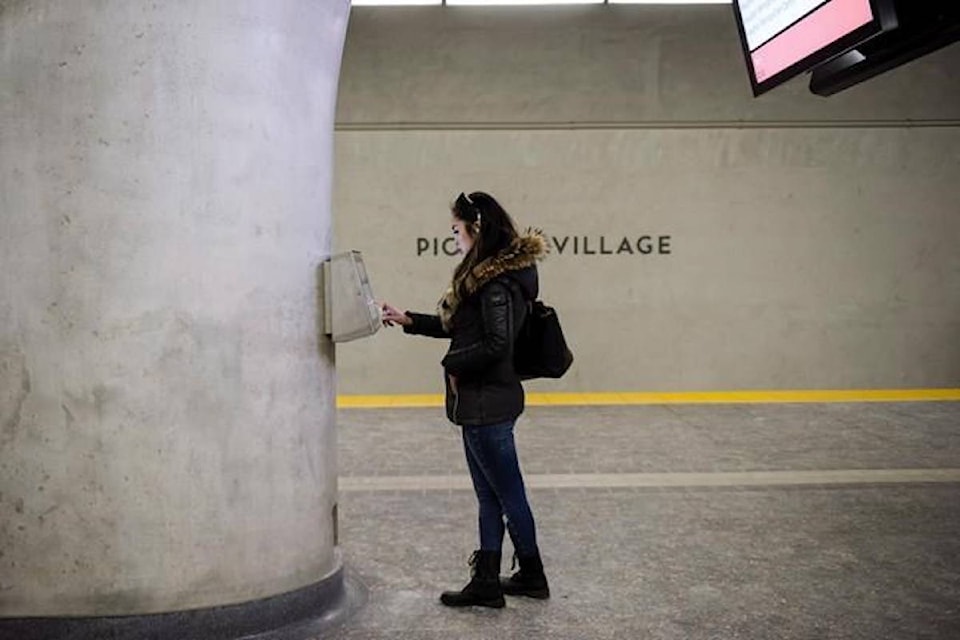Two artists behind a controversial art installation commissioned for a newly opened subway station in Toronto say the city’s refusal to greenlight the project has ironically achieved what the art was meant to do — spark a debate about free speech.
German brothers Jan and Tim Edler, owners of realities:united, a Berlin-based art studio, say they’d been working with the Toronto Transit Commission on the project since 2009. But they say it was only days before the new Pioneer Village subway station’s scheduled opening last month that they were told authorities had concerns about the art piece.
At issue is LightSpell, a public art installation that would allow users to enter eight characters on a control panel in the station that show up on giant light screens that hang from the ceiling.
It was intended to pit freedom of speech versus the collective conscience of other users at the station, Edler said in a telephone interview from Berlin.
“The entire concept of the piece is about the lack of censorship,” he said.
But the Toronto Transit Commission, which paid $500,000 for the project, said it was concerned about its potential use for hate speech.
TTC spokesman Brad Ross said they made the decision to leave the installation dark until they figure out a solution.
“This isn’t about limiting free speech, but making sure people feel safe on the TTC,” he said. “If somebody looks up and sees a racial slur that they think may be targeted at them, then we have failed them.”
Ross said the art was commissioned ”a lifetime ago,” adding that senior management has changed “significantly” at the transit authority since 2009.
“The focus was on getting the extension finished, getting the subway built, getting the track in, the new signalling system, doing all of that work. To be frank, the art was not on anybody’s radar in any way shape or form and it wasn’t until quite literally the last days before opening it was discovered that you could type anything in.”
The TTC is getting legal advice on its risk and exposure related to the Ontario Human Rights Code, he said. They are also getting legal advice on the art’s ownership.
“The artist has some control over their art, they always do, and we’re not in disagreement with that,” Ross said. “We’re trying to come to a resolution, otherwise we would just do what we wanted.”
Ross said he’s hopeful the TTC board will discuss several legal options in its next meeting in mid-January.
Edler said he first realized there would be problems when he was at the station working on the final touches of the piece just before Christmas and saw TTC officials type the word “f—k” on the control panel and take cellphone photographs of the words on the screens.
He said shortly after that he received an email from the TTC brass saying they weren’t opening the installation to the public. He begged them for a last-minute presentation at the station, but that didn’t work.
Edler said he called then-TTC CEO Andy Byford and they discussed using a filter for a black list of words, but both agreed that wouldn’t work — there were too many ways around those systems.
“And, of course, that’s censorship,” Edler said.
The TTC then proposed a ”white list” of safe words that users could choose from, Ross said.
But Edler scoffed at that idea.
“Of course that’s completely crazy and (George Orwell’s) ‘1984’-like and definitely sounds more like North Korea than Canada,” Edler said.
Part of the goal, Edler said, is to provoke discussion about censorship and the use of public spaces.
“I am thankful to have this discussion via the media, whether it’s wrong or right, so in some way the piece is working on a different level,” he said. ”Although I would prefer to have the piece working on site.”
Liam Casey, The Canadian Press
